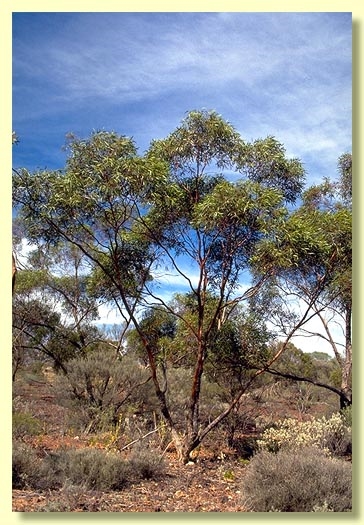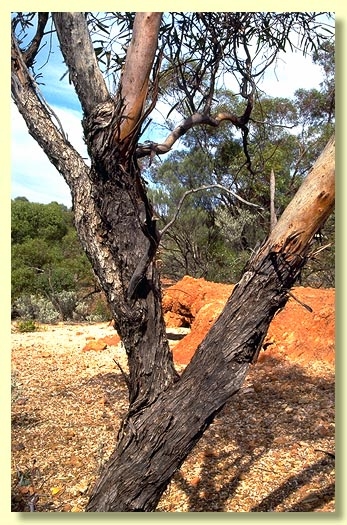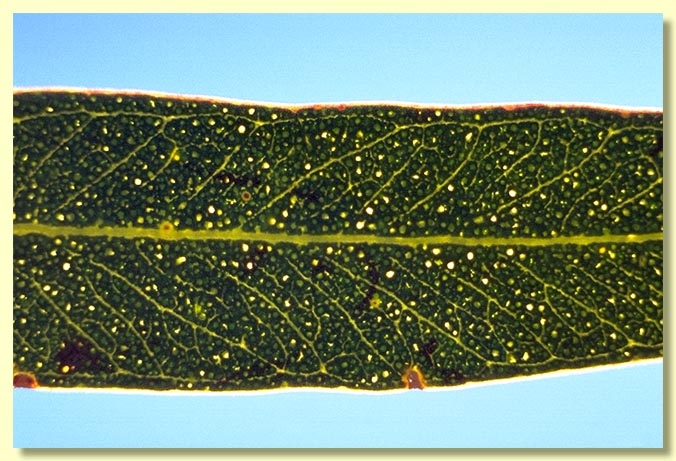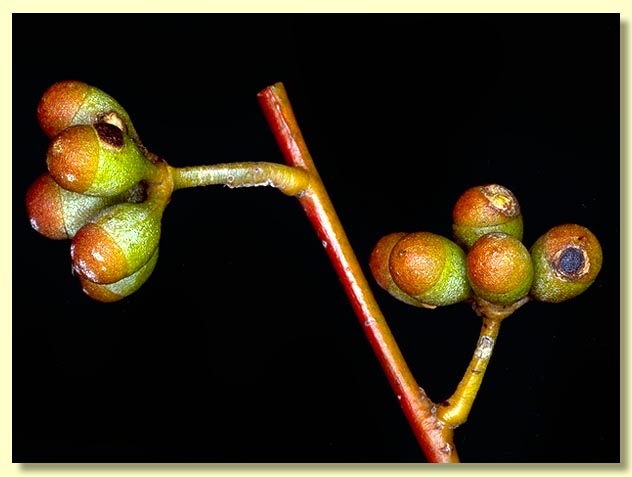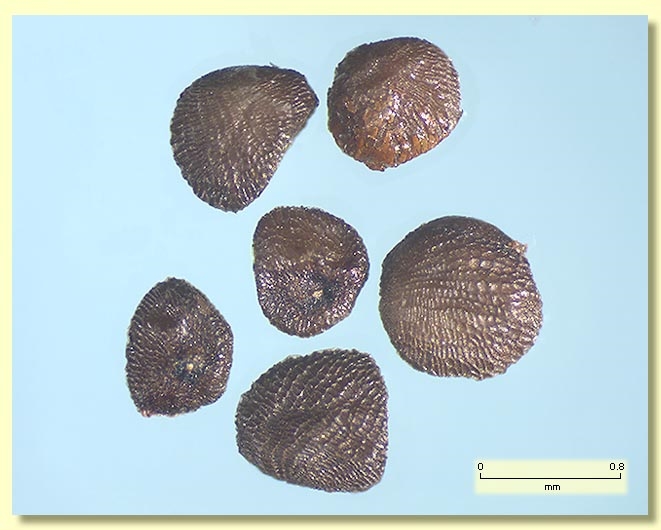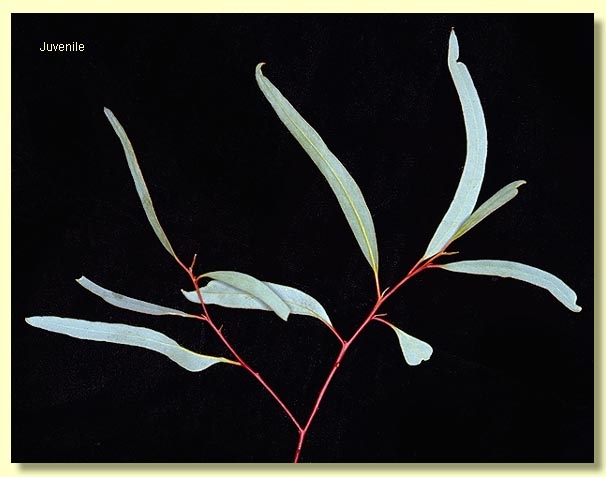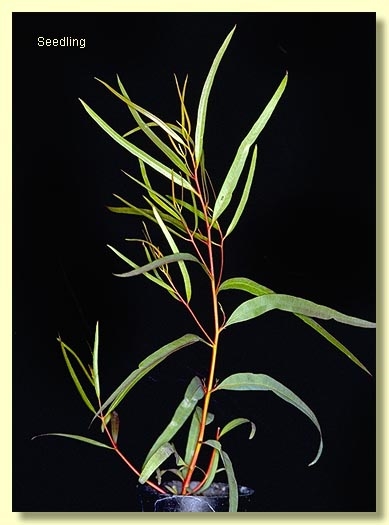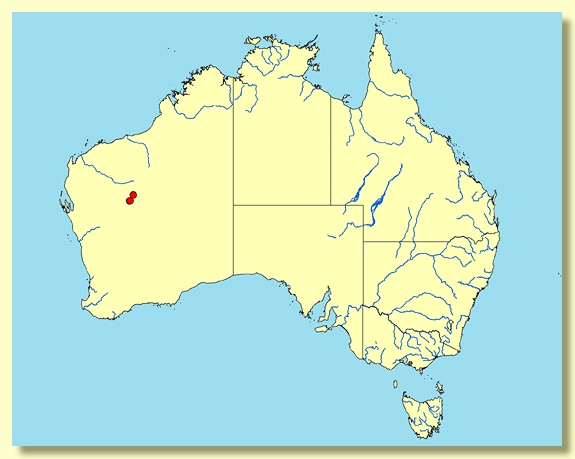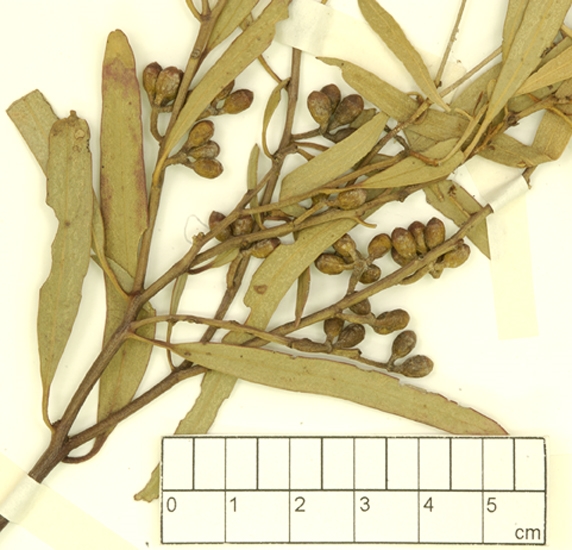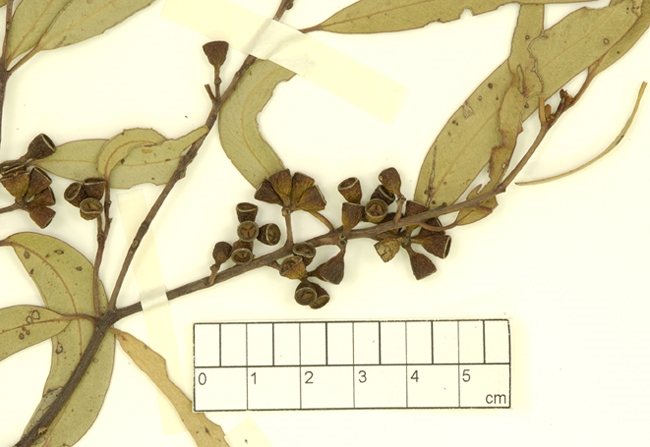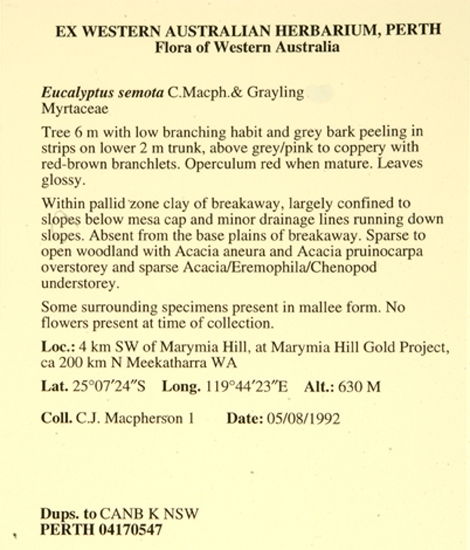Eucalyptus | Symphyomyrtus | Bisectae | Glandulosae | Loxophlebae
Euclid - Online edition
Eucalyptus semota
Tree or mallee to 8 m tall. Forming a lignotuber.
Bark rough for part or whole trunk and extending to limbs ca 6–10 cm diameter, grey to black, box-type, flaking in short strips, grey to brown, pink or coppery.
Branchlets have oil glands in the pith; non-glaucous.
Juvenile growth (coppice or field seedlings to 50 cm): stems rounded to square in cross-section; juvenile leaves always petiolate, alternate, narrowly lanceolate, ca 5–10 cm long, 0.5–1.3 cm wide, grey-green, dull.
Adult leaves alternate, petioles 0.4–1.3 cm long; blade linear to narrowly lanceolate or falcate, (3.3)6–9(10.5) cm long, 0.4–1.2 cm wide, base tapering, margin entire, apex pointed, concolorous, glossy, dark green, side-veins at less than 45° to midrib, reticulation sparse to moderate, intramarginal vein present, oil glands island, small and large.
Inflorescence axillary single, peduncles angular to narrowly flattened, 0.5–1.1 cm long, buds 7 or 9(13), pedicellate (pedicels 0.1–0.2 cm long). Mature buds cylindrical to ovoid (0.4–0.6 cm long, 0.3–0.5 cm wide), scar present (outer operculum shed early), operculum conical to flattened-hemispherical, stamens mostly inflexed, or a few irregularly disposed, all fertile, anthers cuboid to oblong, sub-basifixed, versatile, dehiscing by longitudinal slits, style long and straight, articulate at ovary roof, stigma blunt, locules 3(4), the placentae each with 4(6) vertical ovule rows, or the rows not clear. Flowers white.
Fruit pedicellate (pedicels 0.2 cm long), obconical to cupular, 0.4–0.5 cm long, 0.4–0.5 cm wide, disc descending vertically, valves 3(4), enclosed.
Seeds dark brown, 0.8–1.2 mm long, flattened-ovoid, dorsal surface shallowly reticulate, hilum ventral.
Cultivated seedlings (measured at ca node 10): cotyledons Y-shaped (bisected); stems square to rounded in cross-section, slightly warty; leaves always petiolate, opposite for 3–5 nodes then becoming alternate, narrowly lanceolate, 9–13 cm long, 0.8–1.5 cm wide, base tapering, dull, green.
Flowering time unknown.
A mallee endemic to the arid Gascoyne Region of Western Australia, where restricted to the Marymia Hill area and disjunctly to the south-west near Neds Corner. It is found in clayey gullies descending from laterite mesas and can be recognised by having dark rough bark, pith glands in the branchlets, glossy dark green leaves and small blunt buds.
Eucalyptus semota belongs to Eucalyptus subgenus Symphyomyrtus section Bisectae subsection Glandulosae because the cotyledons are bisected, buds have an operculum scar and the branchlets have oil glands in the pith. Within this subsection, E. semota belongs to a small subgroup of four species, series Loxophlebae, further characterised by having buds with fully inflexed stamens with the staminal filaments geniculate or strongly elbowed and a style that tapers basally, sparsely reticulate glossy green adult leaves and small obconical fruit. The three related species are E. loxophleba (with four subspecies), distributed from south of Shark Bay south through the wheatbelt and east to the goldfields; E. blaxellii, found only near Geraldton; and E. articulata, a rare species from the fringe of the Great Victoria Desert. Series Loxophlebae is restricted to Western Australia.
Eucalyptus semota: Latin semotus, remote, referring to the geographic distance from its close relatives in Eucalyptus series Loxophlebae.

